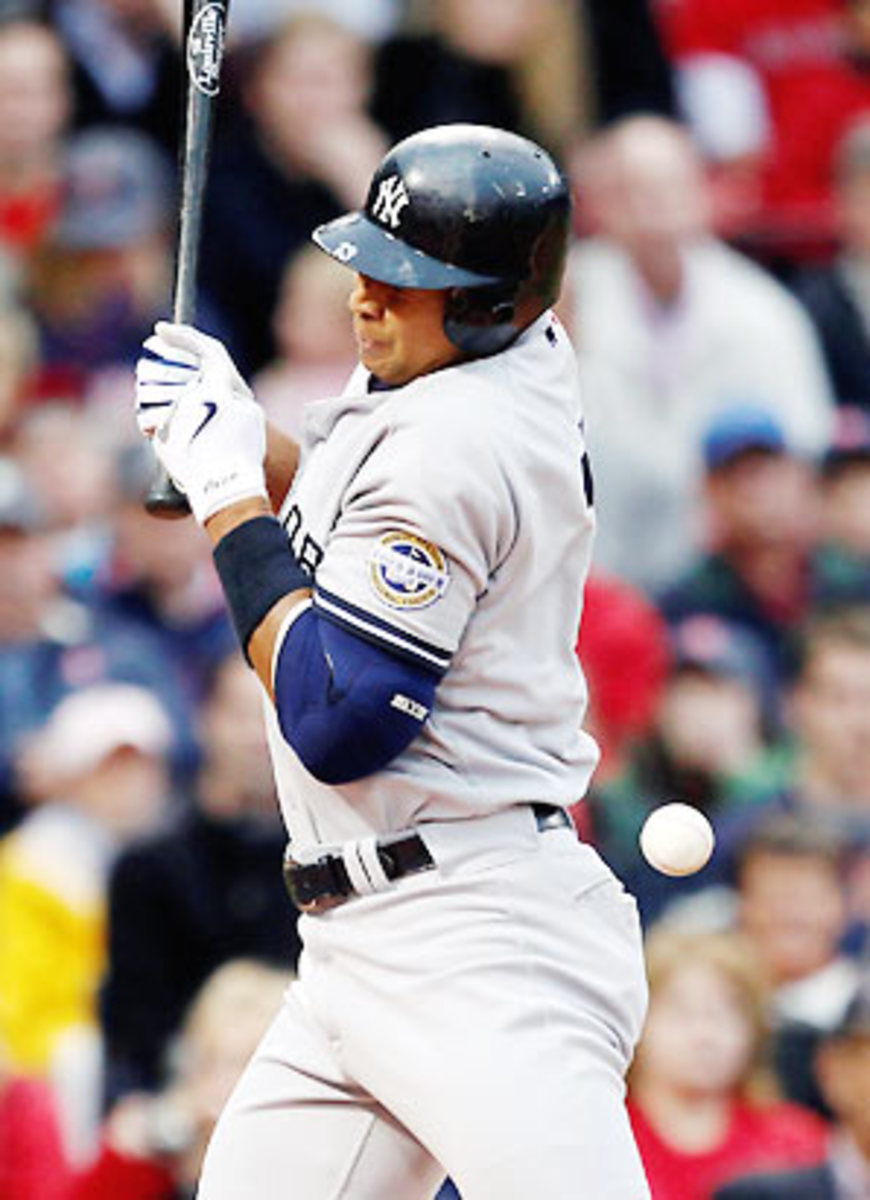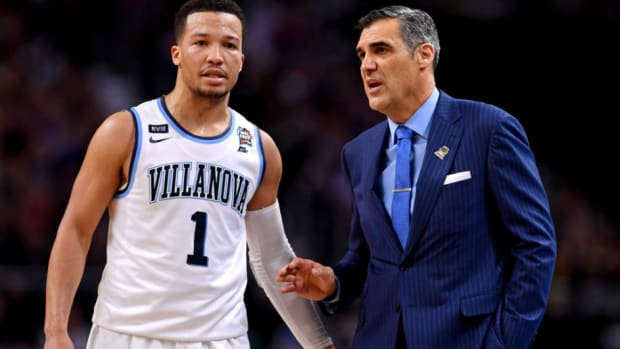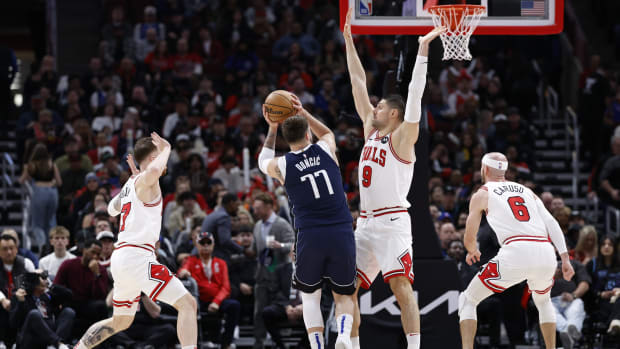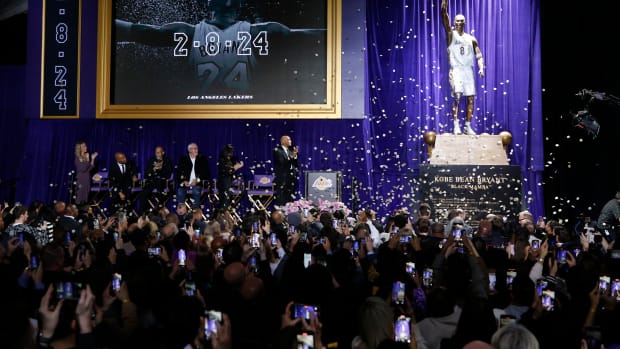
Beanballs on a historic rise
We are back with the continuing evolution of an experiment that last appeared two weeks ago: a combination column with Boston Red Sox senior advisor and baseball writer extraordinaire Bill James...
Today's topic is a winding conversation about beanballs.
Joe: OK, let's start with a little multiple choice question so we can see where you stand on the subject of batters getting hit by pitches. The question is simply this: In what decade in the last, oh, 60 years, do you believe there were the most hit-by-pitches?
A. 1950s B. 1960s C. 1970s D. 1980s E. 1990s F. 2000s
Before giving the answer, I'll give you my thought: I would have guessed the 1960s. I think about the pitchers from that era -- Drysdale, Gibson, Marichal, and so on -- they were famous for taking the inside part of the plate, famous for knocking down any hitter who even looked at them funny. "The trick against Drysdale," Orlando Cepeda famously said, "is to hit him before he hits you."
If it's not the 1960s, then I would certainly have guessed the 1950s -- you know, when men were men, and Sal Maglie was called the Barber, and Early Wynn conceded he would hit his own mother but "only if she was digging in."
So, yes, it comes as a huge surprise to me that there are BY FAR more batters getting hit by pitches in the decade we are in now than in any decade in the 20th Century. Pitchers are hitting batters at almost double the rate they did in those when-men-were-men 1950s.
Here are the per-game percentages of batters getting hit by pitch.
1950s: 19.4% 1960s: 21.8% 1970s: 19.4% 1980s: 17.9% 1990s: 27.6% 2000s: 36.0%
So you can see ... a huge upsurge in batters getting plunked. And yes, this is shocking to me because people always seem to talk about how much bigger a part the beanball played in the old days -- you know, how much tougher and meaner baseball players used to be.
Bill: Well ... I don't think it is a myth that ballplayers -- or PEOPLE -- were tougher in the old days. I think they WERE tougher. They were tougher because they believed in toughness, in ways that are almost unimaginable today. We were all disciplined, as children of the 1950s, in ways that went well, well, well beyond the limits of what would today be legal. We were taught that you don't complain about things; you just carry on. People WERE tougher. I'm not saying it was a good thing, and, lest that be an ambiguous remark, it WASN'T a good thing.
If you go back 100 years, men got into fistfights as a regular part of being a man. People weren't condemned for this, or asked to apologize for it. Joe Tinker once got off the team bus to fight some fans who were jeering at the team. Babe Ruth got into several on-field fights, and many well-documented off-field fights. Ty Cobb, of course, is now widely criticized for his constant fights, but guys like Eddie Collins, Tris Speaker, Rogers Hornsby and Al Simmons engaged regularly in knock-down, drag-out brawls with one another, with fans, with coaches and managers, and with small businessmen and salesmen. Casey Stengel had a long ugly scar off the side of his face from where one of his teammates, in a drunken battle, reached into his mouth ripped the side of his face open.
This didn't disappear suddenly. Bill Dickey was suspended once for ... I think it was 15 days, maybe 30 ... for breaking Carl Reynolds' jaw in an on-field fight. If it had happened 10 years earlier, he wouldn't have been suspended. In 1950s, 1960s, even 1970s, these things still happened, although with ever-diminishing frequency. Billy Martin was, in a sense, the last defender of the petty-punchout tradition. Martin got into constant fights -- which was not unusual in the late 1940s, when Martin entered baseball, but was quite unusual by the early 1980s, when he finally left the game.
Not entirely to confuse fighting with toughness; they were tough in positive ways as well. And in other ways that weren't positive.
Joe: This is what makes the current discussion about beanballs in baseball so tricky. Because something has changed ... the beanball used to be (in large part) a clear and present weapon used by the pitcher or the manager. A guy was digging in -- knock him down. A guy hit a home run -- knock down the next guy. A guy was a bit too mouthy -- knock him down. It was undoubtedly easier to determine intent.
These days, though, who can tell intent?
Bill: The surge in hit batsmen in the last 20 years, in my view, is part of the ebb and flow of the game. It started -- understanding that nothing "starts" anywhere -- but it started with the switch to metal bats in amateur baseball. One of the things about a metal bat is that you can hit the ball off the end of the bat and it will still jump off the bat. In the 1980s it was very common to hear it said that the pitchers were going to dominate the game, in the future, because the metal bats were ruining the amateur hitters. It had always been regarded as a sucker's game to try to drive the outside pitch hard to the opposite field, because you would wind up hitting a weak ground ball. The amateur hitters were "learning" to stand right on top of the plate and drive the outside pitch hard to the opposite field, which -- we were told constantly -- would not work in pro baseball.
But what that generation of hitters learned was not that they couldn't hit the outside pitch hard to the opposite field, but that they COULD. It was like ... before Babe Ruth, hitters were told that it was foolish to hit hard fly balls, because, while a few of them would be homers, many, many more of them would just be fly ball outs. Ruth changed the game because he proved that you COULD, in fact, hit enough long fly balls to make it pay off.
Same thing in the late 1980s -- the young hitters simply proved that conventional baseball wisdom was wrong. This led to a greatly increased number of young hitters who stood right on top of the plate -- and also to a greatly increased number of opposite-field home runs. And as more hitters began to stand on top of the plate and/or stride into the plate and try to crush the outside pitch to the opposite field, pitching coaches began to stress the importance of pitching inside --not conceding the inside part of the plate.
The increase in hit batsmen in the last 10 years is not a consequence of beanballs -- which are deliberate attempts to intimidate a hitter -- but a consequence of these other changes.
Joe: It makes sense ... it's like we're just in the latest phase in the 100-year war to own the inside part of the plate. The pitchers owned it for a good long while, the hitters captured it in the 1990s and 2000s, and now there are all sorts of skirmishes going on. Maybe a delegation of ex-presidents can bring some peace.
And, all of this just makes it trickier than ever for everyone. Umpires and players and managers suddenly have to guess: "What was that pitcher THINKING?" Was Rick Porcello really trying to hit Kevin Youkilis? Did Ramon Ramirez actually intend to hit Alex Rodriguez with that pitch? What did Matt Garza mean when he said he was purposely throwing at Mark Teixeira? Suddenly you have to be Dr. Phil. And it's become silly.
One thing about the old days -- batters mostly knew the rules. They mostly knew when the pitcher was going to knock them down. You know the famous story about Bob Gibson -- the last pitch he threw in the big leagues was hit for a grand slam by Pete LaCock. Years later, in an old-timers game, Gibson faced LaCock. And Gibson knocked him down. "I've been waiting years to do that," Gibson shouted. Rules were rules. But now, because batters often crowd the plate, because they wear the body armor that makes them more fearless, because everyone is watching so closely ... things are tougher to see.
Bill: Well, the body armor that hitters wear has changed the balance of things. The body armor DOES enable the hitter to hang over the plate with impunity, so I think it's relevant. One of the critical things that football got wrong for almost a hundred years (1890-1980) was that it persisted in believing that all "protection" -- all padding -- was defensive. The reality is that the padding is as much an offensive weapon as a defensive weapon. If you put enough pads on a defensive player, he can run full-tilt into the ball carrier or the quarterback with minimal risk to himself. Football finally realized, about 20 years ago, that, for the protection of the players, the padding needed to be regulated.
Baseball will eventually reach the same point -- the realization that allowing players to "protect" themselves with unlimited padding is dangerous. Which they do, I guess ... the body armor is regulated by the leagues. Some of it, you have to have a doctor's statement in order to use it.
Joe: I didn't know that ... so you need a note that says: "I, Dr. Fuffelberg, have told Barry Bonds it's OK to wear as much padding and protective armor as he deems necessary. Hey, a guy could get hurt out there."
RELATED CONTENT:
• VERDUCCI:MLB needs to curb macho culture• KEITH:Sadly, beanballs are here to stay• GALLERY:Recent beanball incidents



































